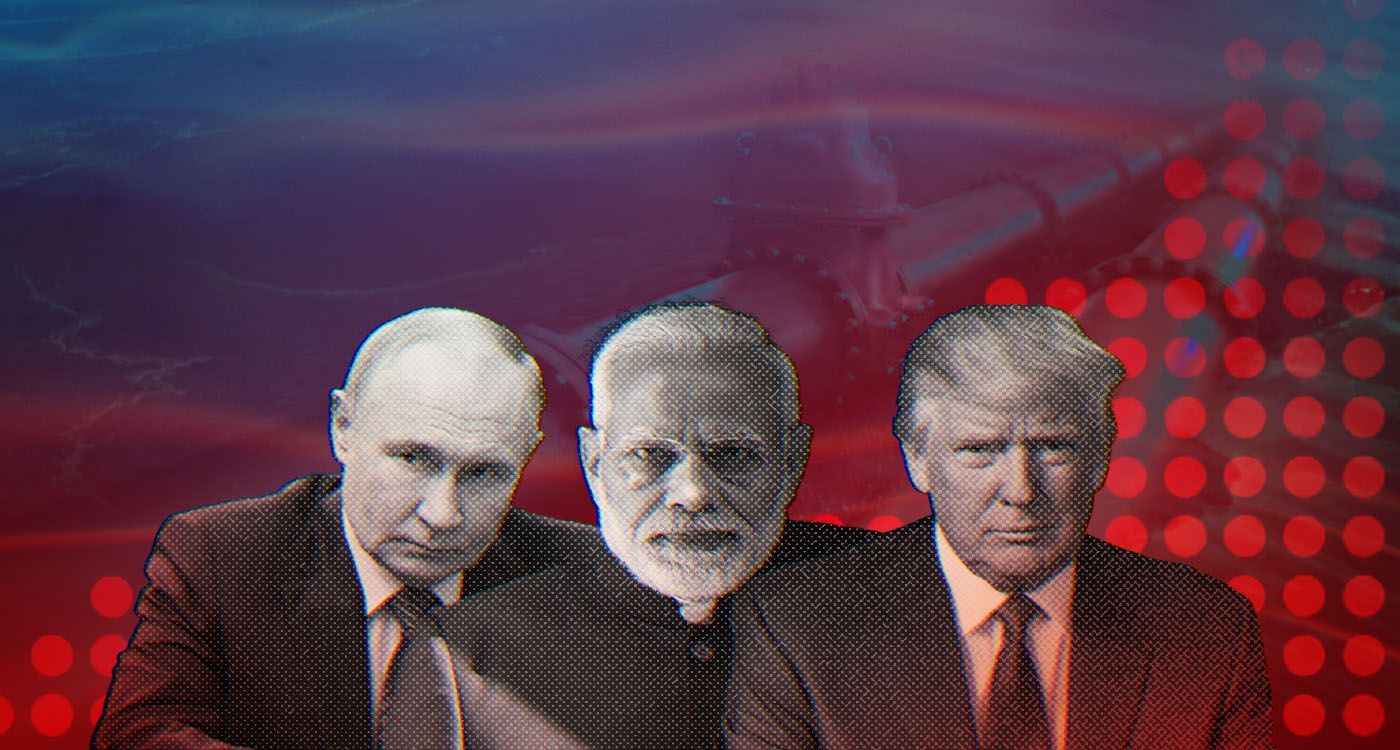- Home
- Middle East
- Between Moscow and Washington, India Charts Its Energy Course

©This is Beirut
US President Donald Trump announced on Thursday that Indian Prime Minister Narendra Modi had committed to “cease purchasing Russian oil” within a “short timeframe,” while imposing 50% tariffs on Indian exports to the United States, with additional penalties for transactions involving Moscow.
However, New Delhi stressed that its “top priority” remains protecting Indian consumers amid a volatile energy market, indicating that no immediate reduction in Russian oil imports has been decided. Understanding this standoff requires considering India’s role within the energy and geopolitical landscape shaped by the war in Ukraine.
A Colossal Energy Appetite and Irresistible Discounts
India imports around 85% of its oil. Before 2022, Russia accounted for just 1 to 2% of its purchases. By 2023, that share had jumped to roughly 39%, making Moscow New Delhi’s largest supplier, according to the Center for Strategic and International Studies (CSIS).
The G7’s price cap on Russian crude, combined with the exit of European buyers, created a perfect window for discounted purchases, secured volumes and higher margins. CSIS estimates suggest that India saved between $10.5 and $13 billion in 2023-2024. While modest relative to a GDP approaching $4 trillion, the savings have substantially boosted the profitability of Indian refineries.
The Hidden Engine: Refining for Reexport
India has become one of the world’s leading refining hubs, with a capacity exceeding 5 million barrels per day. Giants such as Reliance and Nayara have positioned themselves as key players, importing discounted Russian crude and converting it into gasoline, diesel and kerosene. These refined products were then sold to international buyers, including in Europe, whenever regulations allowed.
As long as the European Union sanctioned Russian crude without explicitly banning refined products derived from it from third countries, this practice remained legal. According to CSIS, Indian petroleum exports to the EU reached around $20.5 billion in 2024, a dramatic increase compared with 2019. The Atlantic Council notes that this extension of trade routes created loopholes in sanctions enforcement.
Those loopholes are now closing. The EU’s 18th sanctions package, adopted on July 18, 2025, lowers the price cap on Russian crude from $60 to $47.6 per barrel. Starting January 21, 2026, it will ban imports into the EU of refined products made from Russian crude, even if sourced from third countries such as India. The package also targets the Indian refinery Nayara Energy, due to its ties with Russian group Rosneft and its use of ghost fleets to transport crude. The measure effectively ends the legal grey zone that had allowed India to resell fuel derived from Russian oil to European markets.
Opaque Chains and a Ghost Fleet
The system relies in part on networks that are extremely difficult to trace. CSIS highlights the rise of a ghost fleet, a collection of often uninsured tankers, flying flags of convenience that transported a large share of Russian shipments to India in 2024. Even US sanctions in January 2025, targeting dozens of vessels, were bypassed through the rapid reconfiguration of intermediaries and shipping routes.
The Atlantic Council notes that the increasing number of actors and procedural steps, including transport, blending and re-documentation, makes tracking shipments and enforcing sanctions highly complex.
Alternatives for New Delhi: Costly and Slow
India can currently increase purchases from its traditional suppliers, Iraq, Saudi Arabia and the United Arab Emirates, and expand imports from the US and Brazil. CSIS reports a marked rise in US crude imports in the first half of 2025. However, rapid diversification could raise India’s energy bill by $9–11 billion annually, due to stricter pricing terms and logistical constraints.
A shift to renewable energy and nuclear power, where India aims to triple capacity by 2032, offers a long-term solution, but cannot provide an immediate alternative.
Washington’s Warning Shot
The US has taken a firmer stance. The 50% tariffs imposed by the Trump administration target oil and arms flows to Moscow. Some Indian state-owned refiners have already reduced Russian crude purchases and are turning to other sources. Even Reliance has slowed its shipments, signaling a rising risk of exposure.
At the same time, Washington and its allies are increasing entity designations and tightening export controls, including against Indian companies suspected of supplying sensitive technologies that support Russia’s war effort.
The National Bureau of Asian Research situates this pragmatism within a broader strategic posture. India asserts strong strategic autonomy, neither aligned with the West nor subservient to Moscow, and argues that by absorbing Russian crude, it helps prevent a global surge in energy prices.
CSIS adds nuance. While Indo-Russian ties remain rooted in defense, nuclear energy and fertilizers, the relationship is increasingly one of managed decline, as Moscow draws closer to Beijing and India deepens cooperation with the US and its allies.
Immediate Gains, Uncertain Horizon
In the short term, India purchases Russian oil to secure discounted volumes, supply a highly efficient refining sector and capture export margins, including to Europe, while legally permitted. In the medium term, the closure of the European loophole in 2026, ongoing US tariff pressure and the crackdown on ghost fleets and opaque blending will sharply narrow the precarious path New Delhi is navigating.
India must accelerate both supply diversification and its energy transition without triggering domestic disruptions. Success would preserve strategic autonomy while reducing a politically costly dependence. However, failure could make both energy and alliances more expensive. Caught between economic and geopolitical pressures, India’s bet is calculated, yet the sanctions clock is steadily ticking.
Read more





Comments